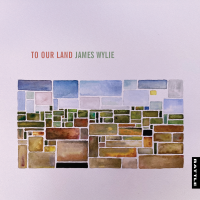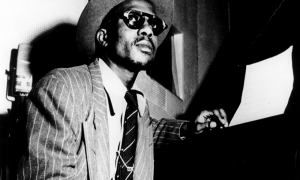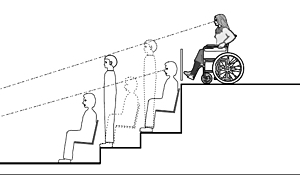Home » Jazz Articles » The Art and Science of Jazz » Thelonious Monk Inside Out: A Fresh Perspective On His Music
Thelonious Monk Inside Out: A Fresh Perspective On His Music

Monk is generally agreed to have had a profound impact on jazz, but few youngsters are going to say, "Hey, I really want to play like him!" And there is no Monk movement taking up where he left off. Periodically, however, there are concerts and recordings honoring Monk, such as the recent tour by the Jazz at Lincoln Center Orchestra with Chick Corea; or CDs by Fred Hersch (Thelonious: Fred Hersch Plays Monk, Nonesuch, 1998), Danilo Pérez (Panamonk, Grp, 1996), and Monk's son, T.S. Monk (Monk on Monk (N2K, 1997). There are groups dedicated to his music such as Monkadelphia (Monkadelphia, Dreambox Media, 2000). They all play Monk tunes, do novel arrangements, and incorporate some of his phrasings and idiomatic way of playing, but astute listeners often wonder, is that really Monk, or just a way of riffing on him, as if to say, "Hey, I really dig him!"
All that being said, there is no reason to carbon copy a legend's music in order to honor him; in fact quite the opposite is true. The best way to honor a great musician is to show in your playing how much you've grown beyond him through his inspiration, as, for example, Dexter Gordon did with Lester Young. If only by osmosis, Monk has influenced many pianists, composers, horn players, and rhythm sections.
However, if you're going to deliberately perform Monk-style, it's a different story. He possessed such a brilliant and unique musical mind and technique, that unless the musician displays a certain intelligence about Monk's pianistic, rhythmic and harmonic idioms, playing his tunes and attempting to use his tactics, no matter how awe-inspiring in other ways, may be disappointing. The listeners' comparison with Monk is inevitable, and just like Monk's contemporaries, some current musicians "get it" and some don't.
To help the musicians along with this task, critics and scholars have formed a cottage industry of sorting out who Monk "really was" and what he was trying to do in his music. A recent work of impeccable scholarship that formed a capstone on all these efforts was Robin Kelley's epic biography, Thelonious Monk: An American Original (New York: Free Press, 2009.) Kelley meticulously documented Monk's music, its sources, and how it relates to his life, but, with all the facts and analysis, something about the Monk musical experience evades understanding. Nevertheless, although the essence will always remain "misterioso," we can try to define its major features with the hope of enlarging and enhancing that experience.
A "Secret" to Monk's Music
I myself have puzzled endlessly over the question of what defines Monk, looking for words to describe his unique approach. Finally, one evening recently, while listening to some of Monk's recordings, I got an idea of what that evasive something might be. I don't pretend by a long shot to have figured out Monk once and for all, but I think what I experienced might provide a useful handle for listening to Monk in a fresh way that sheds additional light on what he was about.Inspired by a musical analysis of a Monk solo by Evan Ziporyn and Michael Tenzer ("Thelonious Monk's Harmony, Rhythm, and Pianism," in Tenzer and Roeder, editors, Analytic and Cross-Cultural Studies in World Music, Oxford, 2009), I was listening to Monk's solo recording of "I Should Care" (Thelonious Himself, Riverside, 1957). Monk plays this otherwise simply stated ballad in a rubato and sometimes jagged manner, taking great liberty with the tempo and harmony, dissecting and re-framing the tune for his own purposes, while at the same time he remains strictly within the 32-bar format of the tune. I found myself listening to it in a dreamy, wandering mental state, as if from a distance, like overhearing it in another room. In that detached state of mind, I had a repeated experience of first thinking, "That's strange and far out," immediately followed by the realization, "Hey, it fits so perfectly." Reflecting on it later, I realized that such an alternation of being outside and inside, deviation from and consistent with the expectable norm captures something of what Monk is all about. Let me try to explain this idea further.
Figure-Ground Reversal
In gestalt psychology, there is a phenomenon called "figure-ground reversal." Most objects we see in the environment are unequivocal. To quote Gertrude Stein, "A rose is a rose is a rose." But when a sensory pattern embodies more than one possibility, it may appear one way, and then another. It is illustrated by Rubin's_Vase, an image that alternately appears as a vase versus two faces looking at each other.Our perception of Rubin's vase never resolves to one or the other, but oscillates between the two. The point made by the gestalt psychologists is that the figure (the object we see) and the ground (its surroundings and context) depends on how the brain interprets and organizes a particular sensory input into patterns. What is perceived can fluctuate. Similarly, in a work of art or music, two or even more patterns may demand equal time, as in Escher's famous print where birds_and_fish alternate in our perceptions of the same shape or form
In music, profound examples of figure-ground reversals occur frequently in J.S. Bach's counterpoint, in which a note or motif may appear as part of one contrapuntal line or another, and the listener can hear it both ways. Alternating perspectives make Bach's music endlessly fascinating and give it special meaning beyond the notes themselves. Bach's The Art of the Fugue is full of examples of this kind. The notes and their shifting contexts are in constant interplay. Of course, composers other than Bach, as well as many jazz musicians, also have made use of this confluence of melodic streams to create a kind of "third stream" that results from the interactions of the contrapuntal "tributaries."
For Monk, there is a particular figure-ground reversal that I would argue is crucial to all his playing and composing. Part of the magic of Monk's music, and what gives it great appeal despite its superficial "craziness" (i.e., clashing with the traditional, programmatic, and expected) is that the ear hears what he's doing from two alternating perspectives that are equally valid: "in" and "out." "In" means that it is compatible with the mainstream vocabulary of swing/bop that is familiar to us. "Out" means that it appears dissonant, exotic, and unfamiliar with respect to that same musical language. Monk alternates "in" and "out" in a figure-ground musical equivalent of a Socratic dialogue. Like Socrates, he makes a space to "think" when he improvises, and by the same method used by the great philosopher, he offers an alternative solution to the problem. The album Monk's Dream (Columbia, 1963), coming at the height of Monk's ascendance, has many examples of rhythmic flow disrupted by "spaces" where a musical "Q&A" is introduced.
Monk wouldn't have been so listenable if he had been as systematic as Socrates, or for that matter, as Lennie Tristano (Monk's contemporary, an innovative pianist in his own right) who sought a set of formulas from which improvisations could be built. Formulas were of little interest to the adventurous Monk. Like Alice in Wonderland, Monk dove into the rabbit hole of musical experience. So his playing is full of surprises and unusual juxtapositions. But he did seem to have a "looking glass" that served as both a telescope and, used in reverse, a wider view of music from a space beyond it, so that what others might hear as oddities to be avoided fit perfectly within his greater musical perspective. The critic Paul Bacon put it this way: "He hasn't invented a new scheme of things, but he has ... looked with an unjaundiced eye at music and seen a little something else... Monk is making use of all the unused space around jazz and he makes you feel there are plenty of unopened doors." (italics mine/VLS) (Rob van der Bliek, editor, The Thelonious Monk Reader, Oxford, 2001, p. 216.)
In a way, this is what all pioneering jazz musicians do. They discover original possibilities within the existing music and conceive a new variation, approach, or style. But few achieved an originality to compare with Monk. (I'll have more to say later about the difference between Monk and the avant-garde, who were even more "out" than Monk.) Many of Monk's improvisations initially appear outrageous, almost like a child randomly hitting the keys, and then you take a breath and it fits perfectly. You always get the dual perspective of "out" and "in," a jolt out of the blue, and then a sense that it is contained within the traditional modalities, like a kind of "check mate." He might put in an F# when you expect a G, or a halting rhythm when you think it should swing, or a chord from another key that doesn't seem to belong there. But then he "check mates" you because the music has its own inner logic that you didn't hear before, just as a chess player doesn't see the reason for his opponent's move until he's "mated."
The "in-out" figure-ground reversal occurs frequently in Monk. Moreover, he is perfectly comfortable going "out" in his own way while his co-musicians play within a standard bop/swing format. In a host of albums with saxophonists like John Coltrane, Sonny Rollins, Charlie Rouse, Gerry Mulligan, and Johnny Griffin, these legends move forward in their usual manner. When Monk comes in, he might use an unexpected tone cluster or dissonance, throw in some "nutty" rhythms, or hit the keys with his forearm. But it fits well, even enhances the quality of the hard bop lines. He goes "outside," but, unlike the avant-garde as such, he remains "inside." He vastly expands what we can hear as "inside."
Taking It in Stride
Monk's use of stride rhythm (especially influenced by the pianist James P. Johnson) is a particular feature that has a figure-ground relationship with respect to swing. (If you listen to Johnson, you can not only hear the stride rhythm, but occasionally some of the embellishments, hesitations, and chordal displacements that became signature Monk. It's not impossible that he got them from Monk, because they played at jam sessions in Johnson's apartment!) The usual story is that swing replaced stride to accommodate the dance craze. (And then bebop used an upgraded swing to accelerate and increase the complexity of the improvisations.) When swing came along, stride was "out." But Monk, despite his immersion in modern jazz, never gave up on stride, in fact made it a kind of trademark, because the halting quality of pulling back on the upbeat made spaces in which he could capitalize when musicians like Charlie Parker were hell-bent on filling all those empty spaces with notes. For Monk, stride and swing were completely compatible. They grew up along side one another and complemented one another. So Monk could comp a swinging band with a stride rhythm, and it worked perfectly. Monk instinctively heard the bigger picture of jazz rhythm's common ancestry in ragtime and West African drumming. In this respect, he was one of the innovators of polyrhythm, combining multiple rhythmic pulses.His uncanny ability to reconcile opposites is what made Monk so imaginative and innovative in his time. It's as if, rather than representing the cause of a particular style or idiom, he had a broader, all-encompassing experience of jazz in all its forms, so that he could insert features of one form, such as stride, into swing, and, for him, it would fit perfectly because it was all jazz, not a specific genre.
A Musical Equivalent of Three-Dimensional Chess
An analogy to chess again occurs to me. We could say that the bebop and hard bop players around him played on the usual two-dimensional chess board, where the chess moves represent all the infinite possible ways of improvising within those idioms. It's as if Monk played (as some chess masters have done) in a three-dimensional cube space which encompassed another level of infinite possibilities that followed the same rules, yet had many more options. He played the same "chess" game as, say, Parker or Mulligan or Coltrane, but he added a third dimension to it. He was "in" the game, but at the same time he was "out," because his larger view allowed him to improvise in a personal idiom that at first sounds different, and then there is the realization that it is part of a larger whole, the same chess pieces and rules only with a dimension added.Monk's "In and Out" Life
It is said that "art imitates life" (and if you believe Oscar Wilde, "life imitates art.") My reading of Kelley's biography and other depictions and recollections of Monk's life suggests to me that the reversal of perspectives of "out" and "in" was central to the way he functioned as a human being. The very name: Thelonious -Sphere -Monk provides a hint that something "out" is going to happen in a man's life: a rare Latin first name, a middle name connoting geometrical perfection, and a last name of someone who spiritually withdraws from the world. Starting out as a professional musician, he took the unusual job of providing music for a touring evangelist, a path that was totally different from the New York crowd he was beginning to hang with. And when he returned to the city, as one of the major contributors to bebop at Minton's Club in Harlem, he was respected by his peers, and at the same time, they always heard his playing as something different. He was both "inside" and "outside" the bebop community, and by being "outside," his early career suffered for lack of gigs and notoriety, even though by 1947 he had written several standards such as "Round Midnight" and had mentored many of the great players such as Gillespie and Parker.Monk married a woman whom he loved, was a devoted husband and father, and yet he spent his last years with Baroness Nica von Konigswarter, living in a platonic relationship at her home, with his wife's approval! Who does that? He lived a dual life as a bohemian and a conventional family man. He reversed and reconciled diverse perspectives in many areas of his life, so it would seem natural that he would do so in his music.
The causes of Monk's particular perspective reversals, alternating or holding in consciousness opposing paradigms, are complex. Perhaps most importantly, he was musically gifted in this respect, being blessed with ears and a brain that took in a much wider swath of sound possibilities than most. He was also both graced with and haunted by an emotional sensitivity that led him to create some of the most subtly expressive songs and improvisational lines in the history of jazz. But he also suffered from a major mental illness, probably bipolar disorder exacerbated by substance abuse. (Harold Rutenberg, a cardiologist and jazz saxophonist, recently told me that a close associate of Monk said that he also underwent "fugue states," a dissociative disorder in which the patient's normal identity is temporarily forgotten.) It's possible that the figure-ground perspective reversal I've discussed came from the way these mental conditions configured Monk's mind: his thinking, his attitudes, his way of making sense out of music and the world. He wouldn't be the first creative genius whose art was shaped by mental and physical illness which, in their hands, illuminated something about the nature of their craft and of the world. Perspective reversals are common in mental illnesses such as psychosis, but creative people can stay in reality sufficiently to turn their illness into productive work. It's never been clear how much Monk lived in a separate psychotic reality, but there were times when he seemed to do so. It's possible that his mental illness may have contributed to his going between "in" and "out" in the musical world as well.
Postscript: Monk and the Avant-Garde
During the time of Monk's tenure as a prominent jazz pianist, the avant-garde movement, also known as "the new thing," came on the scene to play a revolutionary role in jazz. Ornette Coleman, Cecil Taylor, and a host of others vastly expanded jazz in many directions, and their influence of course continues to the present day. To many fans and musicians, Monk was "far out" and some considered him part of the avant-garde. But as part of my "in-out" perspective on Monk, I wish to emphasize how he differed from those who ventured into "the new thing."The avant-garde players strove to retain the roots of jazz: improvisation, blues, tribal-like rhythms, and personal statement. But, striving mostly for the "outside," they largely disregarded the conventional harmonies and forms that were used up to that point, allowing them to expand into realms of creativity well beyond the norm. To use the analogy developed above, they stopped playing chess and generated new musical "games" with new rules or the lack thereof. The resulting vast expansion of jazz continues to this day, and controversies still arise about the validity of a particular musician or performance.
To my knowledge, Monk never ventured into the avant-garde. As "far out" as he went, he was always consistent with standard forms. He always valued and adhered to the "inside" perspective that the avant-garde players were more than willing to minimize or disregard. In this respect, Monk played an important role in defining the difference between "mainstream" and "avant-garde" as it is used by musicians today. Like Monk, mainstream musicians like Monk stretch the rules, but they never discard them. Of course today, there are so many ways of playing jazz that the mainstream-avant-garde distinction is losing its grip. The jazz world awaits a new Monk who can bring together "outside" and "inside." Or has that person already arrived? And we just don't know it yet?
Tags
The Art and Science of Jazz
Thelonious Monk
Victor L. Schermer
John Coltrane
oscar peterson
Chick Corea
Fred Hersch
Danilo Perez
T.S. Monk
Dexter Gordon
Lester Young
Lennie Tristano
Sonny Rollins
Charlie Rouse
Gerry Mulligan
Johnny Griffin
James P. Johnson
Charlie Parker
Ornette Coleman
Cecil Taylor
PREVIOUS / NEXT
Support All About Jazz
 All About Jazz has been a pillar of jazz since 1995, championing it as an art form and, more importantly, supporting the musicians who make it. Our enduring commitment has made "AAJ" one of the most culturally important websites of its kind, read by hundreds of thousands of fans, musicians and industry figures every month.
All About Jazz has been a pillar of jazz since 1995, championing it as an art form and, more importantly, supporting the musicians who make it. Our enduring commitment has made "AAJ" one of the most culturally important websites of its kind, read by hundreds of thousands of fans, musicians and industry figures every month.
























